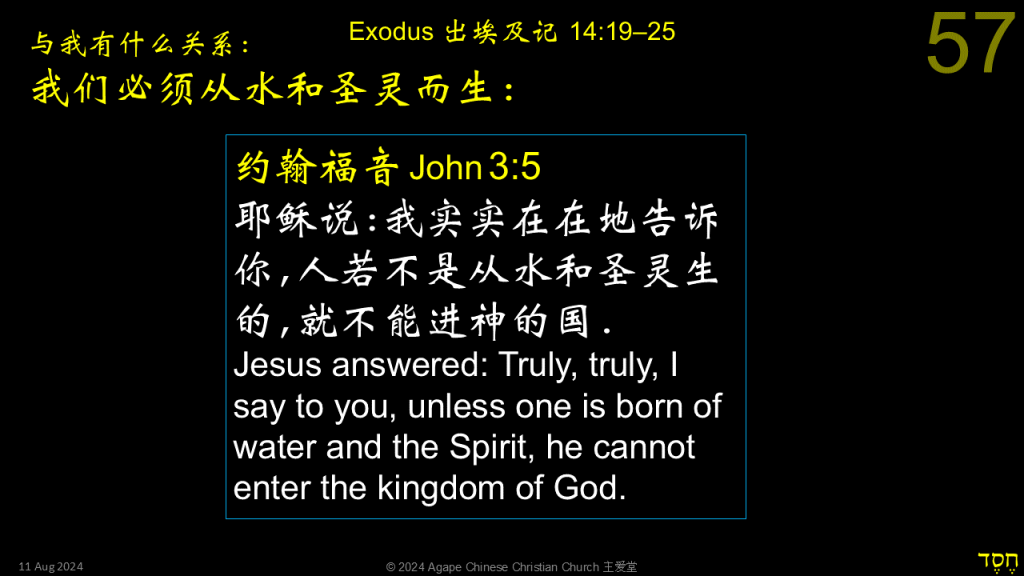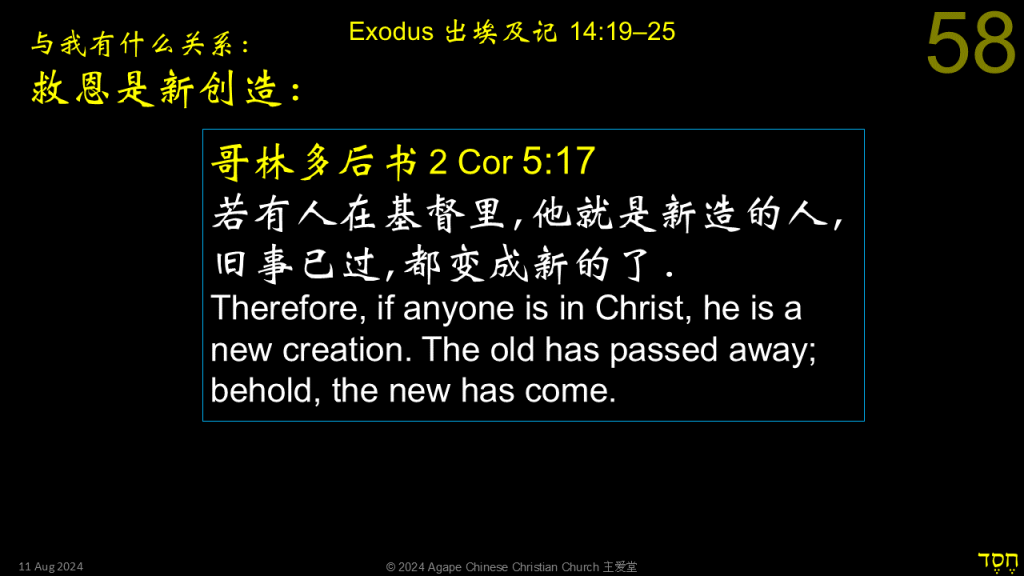哪里见过这个?Where Have We Seen This Before?
出埃及记 Exo 18:13–27
Remember these points
I put these points at the top of my sermon-prep template to remind myself every week:
- Show that main point of passage relates to Jesus and his saving work
- (1 Cor 1:18) A truly gospel-centred message will not be acceptable in a synagogue or mosque
- Did I proclaim the gospel as the headline news of the sermon, rather than as a “by the way…”?
- Unbelievers are called to repent, believe, and be saved
- Believers are encouraged to abandon their old self, renew their minds, put on the new self in Christ
- Preach simple sermons, so that God’s people can see Christ more clearly and love him more dearly
News


Hook
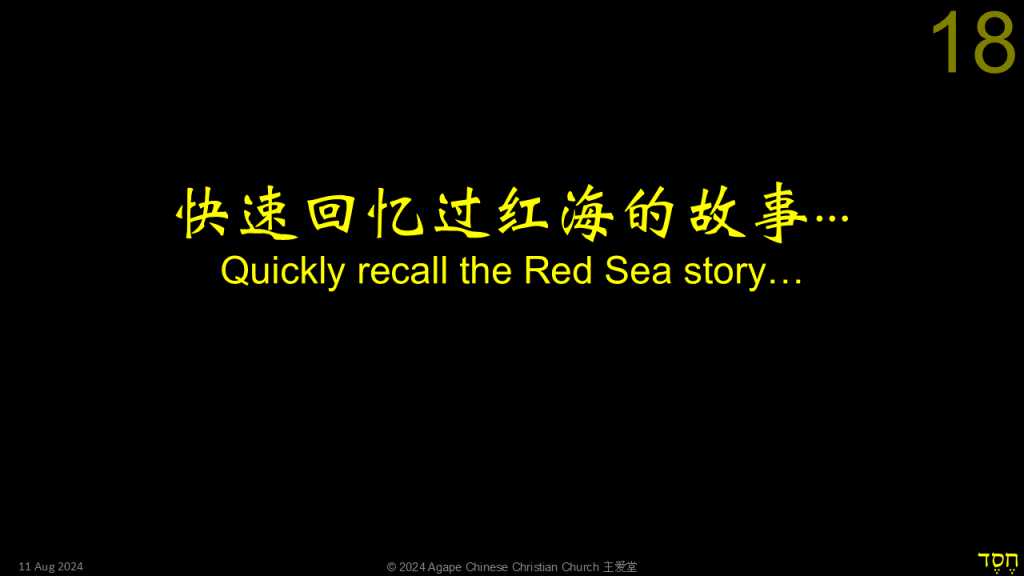
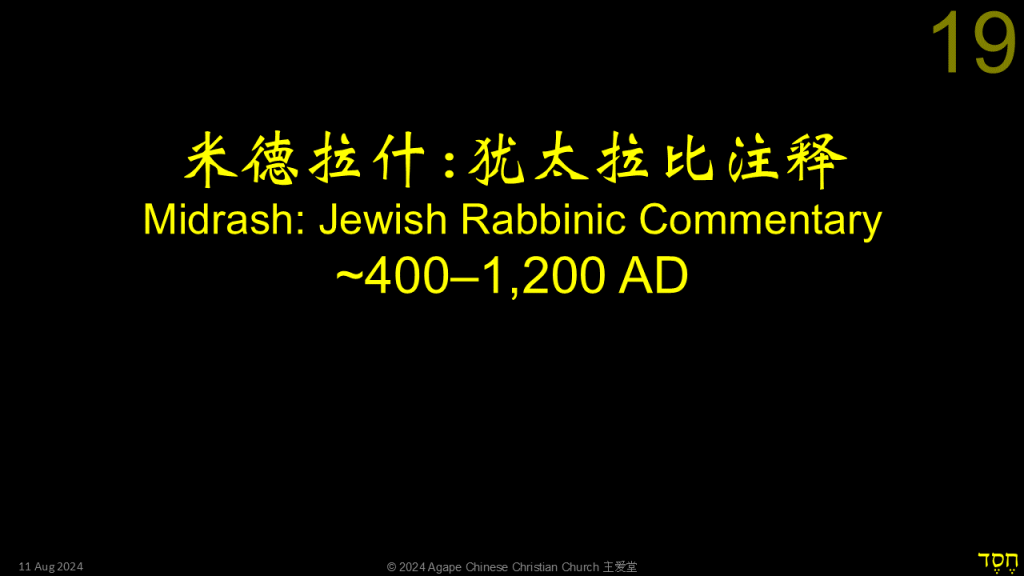
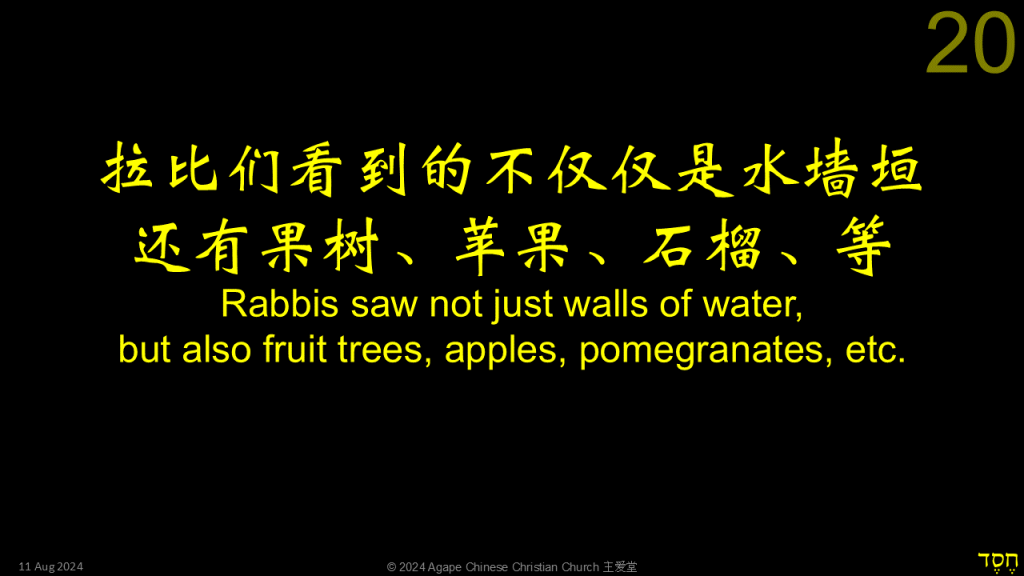
In the Midrash (Jewish Rabbinic commentary on the Bible, wikipedia article here),
the Rabbis said that when the Israelites crossed the Red Sea,
they saw not just walls of water on their left and right,
but they also saw fruit trees, apples, pomegranates, etc.!
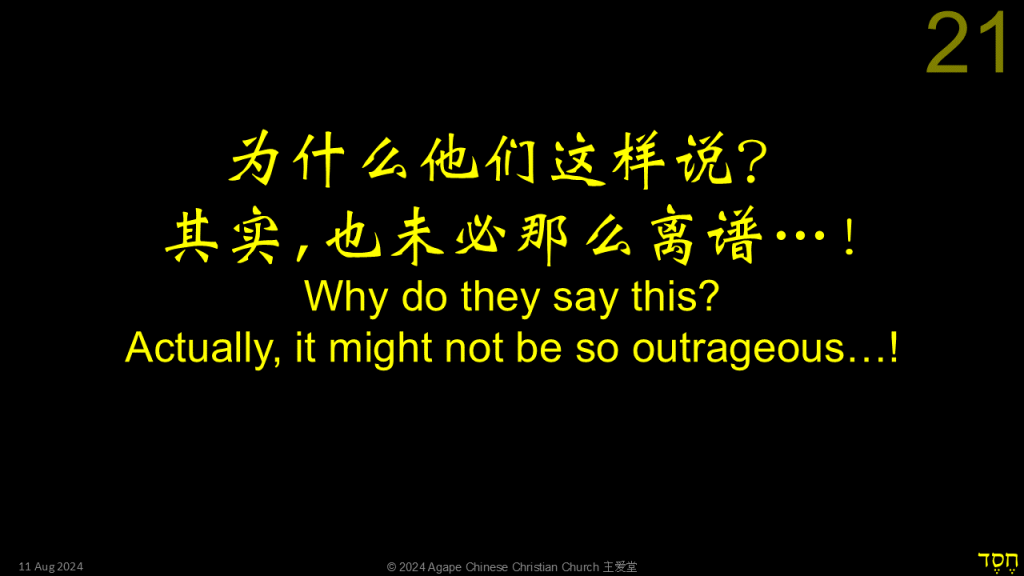
What do you think of this?
Why would they even imagine such a scenario?
Passage
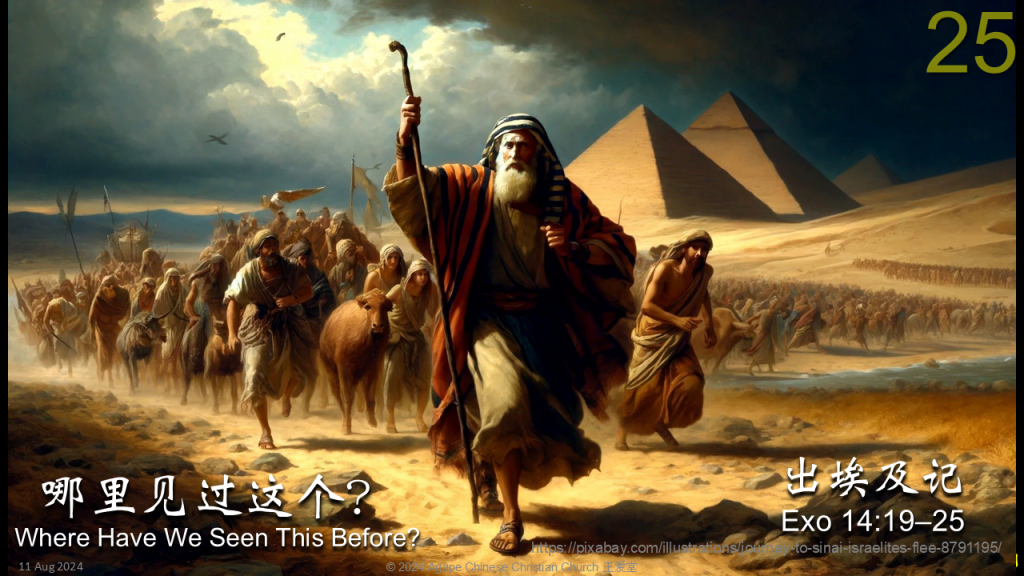
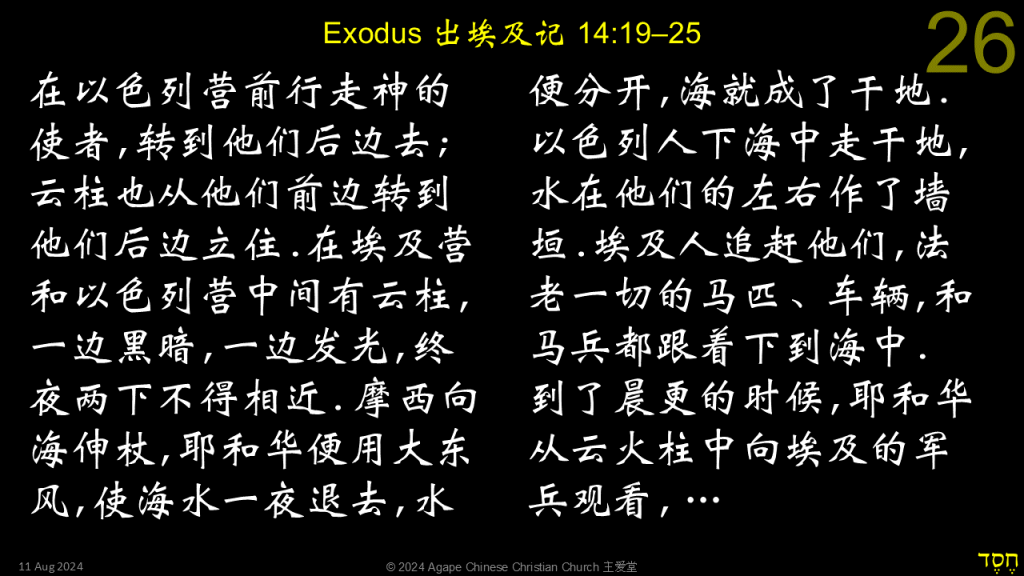

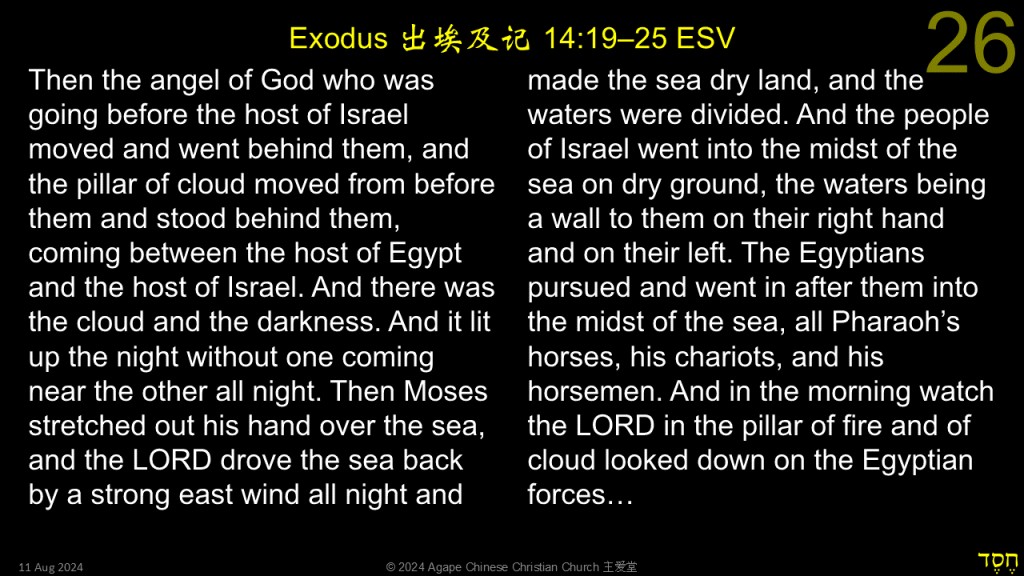

d
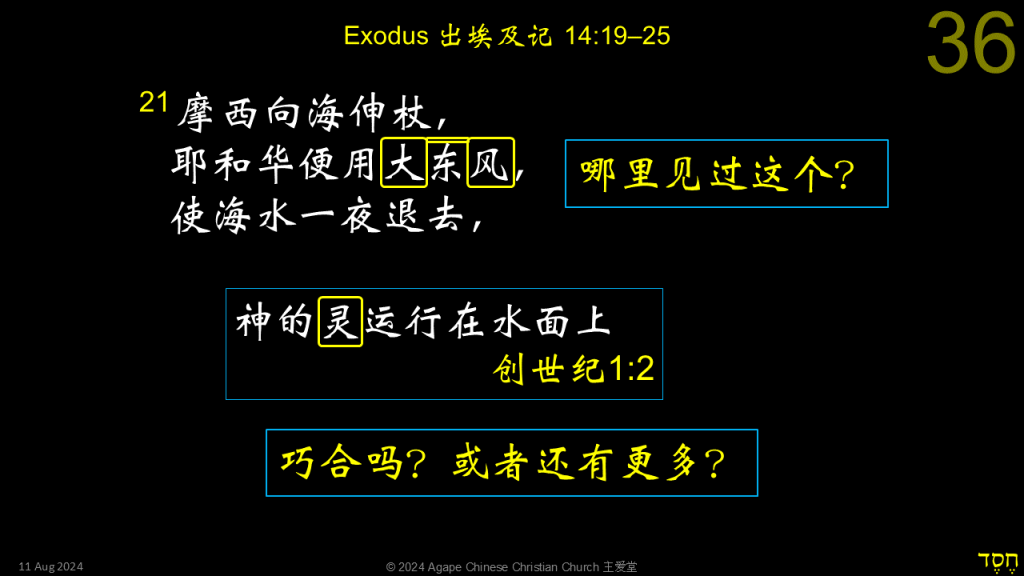
This is Exo 14:21. Verses without specifying the book or chapter means Exo 14.
“Strong east wind”: Where have we seen “wind” before?
In Gen 1:2. “…the Spirit of God was hovering over the face of the waters.”
This might just be a coincidence. Are there more matchings like this?
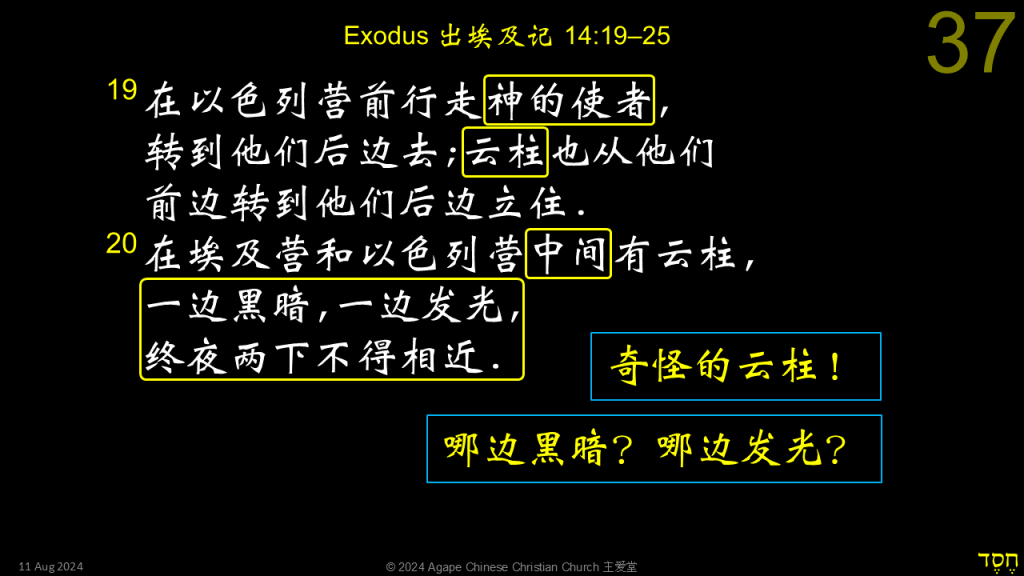
This is Exo 14:19–20.
It mentioned the angel of God moved to the back of the Israelites (so in front of the Egyptians).
The pillar of cloud also moved to the same place.
Note the strange appearance of the cloud: one side is dark, the other is light,
and the two sides are separated (“without coming near the other.”)
Which side do you think is dark, and which side has light?
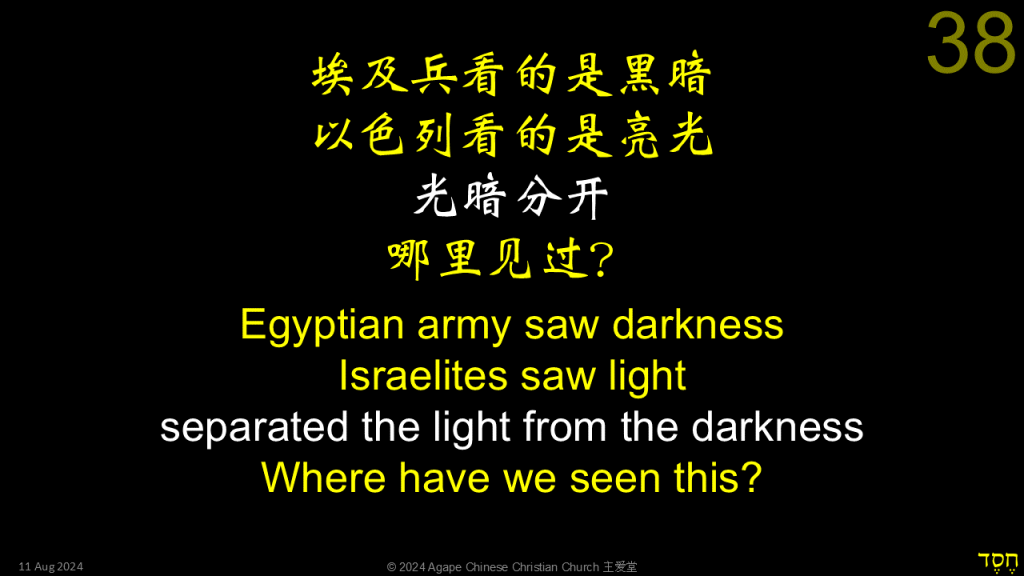
This is light and dark separated. Where have we seen this before?
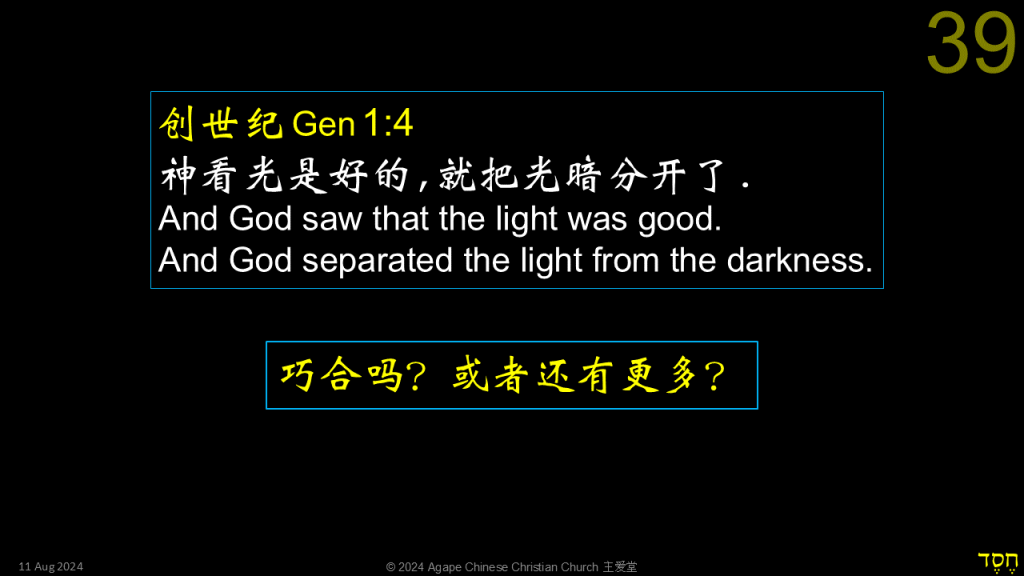
In Genesis, Gen 1:4.
Again, is this coincidence, or is there more to this?

Genesis continues with separation of water and sky (“expanse in the midst of the waters”).

In Genesis, God separated the water and air (firmament) vertically.
Here in Exodus, the separation is horizontally.
Any more like this?

The Israelites walked on dry land.
CUV translates “dry land” as 旱地, but it’s the same word in Hebrew.
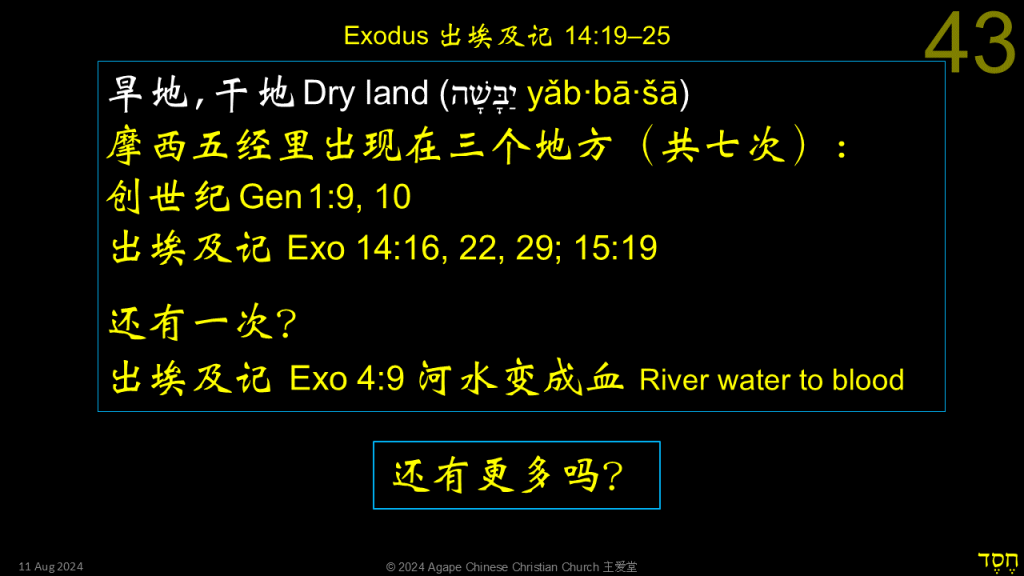
Dry land is hab-ba-sa in Hebrew.
A rare word, appearing 7x in the Pentateuch (14x total in the entire OT):
Gen 1:9, 10; Exo 14:16, 22, 29; 15:19.
There is one more appearance, where?
In Exo 4:9, when God asked Moses to take some river water (from the Nile) and pour it on “dry land.”
The water turned to blood.
Any more like this?
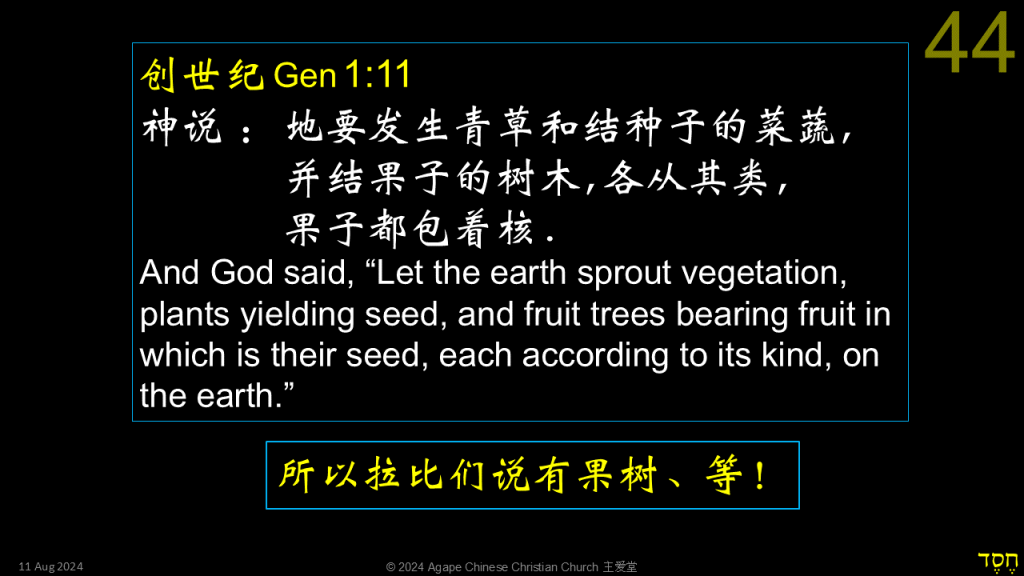
The next item in Creation is the appearance of fruit trees.
This is why the Rabbis suggested that this was what the Israelites saw as they crossed the Red Sea!
Lessons
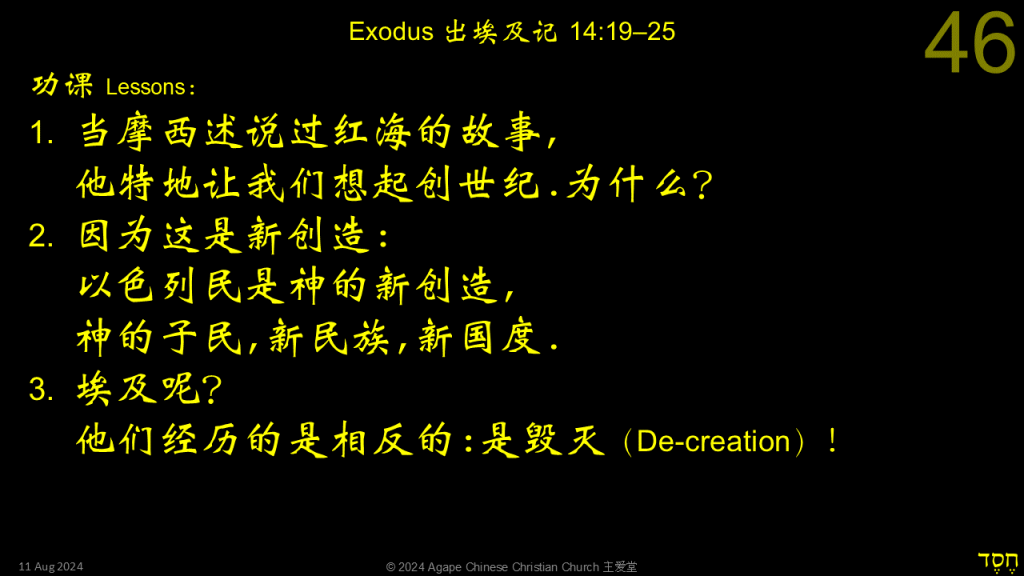
- When Moses was describing the Red Sea Crossing,
he purposely made us think of Genesis. Why? - Because the Red Sea Crossing is a new creation:
The Israelites are God’s new creation,
God’s people, new nation, new kingdom. - What about Egypt?
They experienced the opposite: destruction (de-creation)!
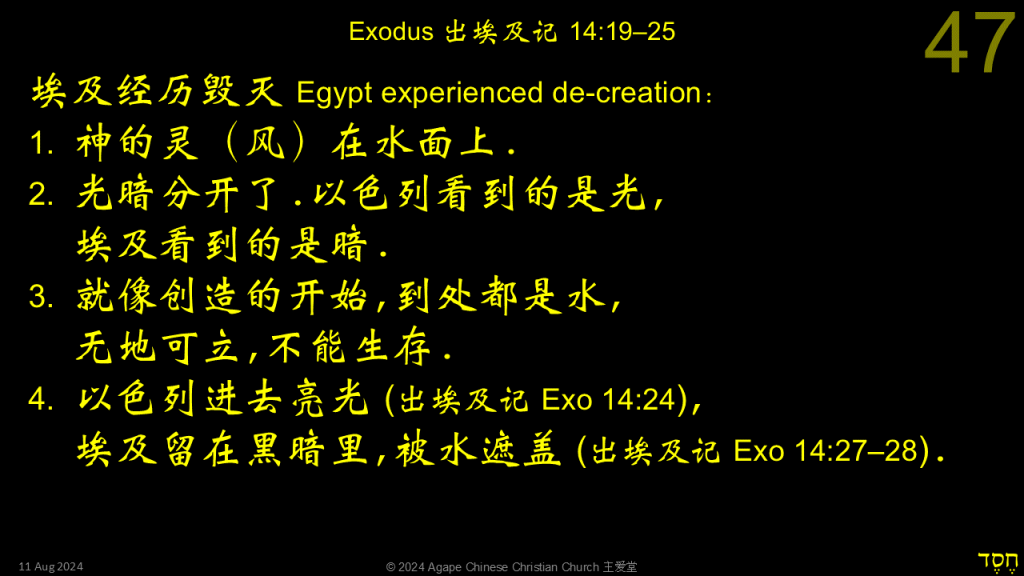
Egypt experienced de-creation:
- God’s Spirit (wind) was hovering over the water.
- Light and darkness separated. Israel saw light, the Egyptians saw darkness.
- Just like the start of Creation, there’s water everywhere, nowhere to stand, can’t survive.
- Israel entered the light (Exo 14:24),
Egypt stayed in the darkness, covered by the water (Exo 14:27–28).
与我有什么关系? So What?
